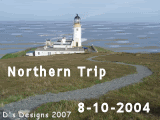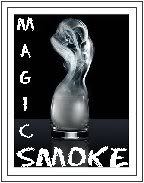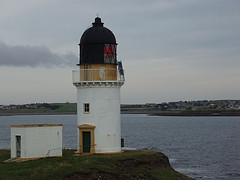
The Iolaire disaster, where 200 men died yards from shore
DIANE MACLEAN
31 December 1918
THE ISLE of Lewis had a hard war. Some 6,200 men joined up and nearly 1,000 had died. Every family on the island had lost fathers, sons, brothers or uncles. So, the night of 31 December 1918 was tense with expectation. The war was finally over, the world was at peace and after four long years the men who had served king and country were on their way home.
The Kyle of Lochalsh was alive. Hundreds of laughing, boisterous servicemen were crowded onto the quay. The regular steam-ferry, the SS Sheila, was soon packed so the Royal Navy ordered the Iolaire across the Minch from her berth in Stornoway to carry the extra men left behind.
The Iolaire had been a luxury yacht before the war, sailing under the name of the Amalthaea. She was used by the navy in anti-submarine and patrol work when she was renamed the Iolaire – Gaelic for "Sea Eagle".
When she arrived in Kyle there was some discussion between the Master, Commander Mason and Commander Walsh, in charge at Kyle. Commander Mason was worried about the paucity of life-saving equipment onboard. She was kitted out with only two lifeboats and lifejackets for 80. Even more worrying she had never sailed into Stornoway harbour at night, a tricky manoeuvre in daylight.
Discussions were brought up short when two more trains arrived at the quay spilling out more demobbed men. The master ordered the 284 servicemen, predominately navy reserves, up the gangplank and onto the ship.
She left at 9:30pm, sailing out of the darkness of the new year. But 12 miles out of Stornoway Harbour the weather turned. As a gale took hold the crew of a local fishing boat watched in confusion as the Iolaire failed to change course to make harbour. Instead she carried on full steam ahead into the pitch-black night.
Biastan Thuilm - the Beasts of Holm - is a rocky outcrop just short of the harbour entrance. A small light attached to the rock warns mariners of the approaching danger. When the Iolaire failed to turn, the flickering light was useless. The momentum of the ship kept pushing her forward.
Visibility was poor. Sleet was falling and the seas were wild. When the ship collided with the "Beasts" she went over almost immediately. Nobody on board knew where they were. The boat was lying only about 20 feet from land, but between the ship and the rocks was a boiling, raging sea. Fifty men jumped into the water and made for shore. They all drowned in the freezing water. The two lifeboats were launched, but were swamped immediately as too many men battled for too few seats.
At three o’clock in the morning the ship’s back broke and she went under.
As the men onboard slowly drowned one man, John Macleod, swam for his life hauling a rope behind him. When he reached shore he set up another stronger rope, and 25 men escaped along this safety line. John Macleod was awarded the highest peacetime aware for heroism for his incredible courage and strength.
Donald Morrison climbed the mast as the ship went down and clung on as she submerged. He was picked up alive the next morning at 10 o’clock, having spent eight hours in the water.
His brother was not so lucky. He drowned alongside 205 men who had seen off enemy fire only to die within shouting distance of their own homes.
The Lewis Roll of Honour records the poignant loss of Kenneth Macphail whose death epitomises the tragedy: "He was the sole survivor of a ship torpedoed in the Mediterranean in October 1917. He had a terrible experience before he was rescued having been nearly 36 hours in the sea until washed ashore in Algeria. Pathetic in the extreme it is to think that this powerful seaman after so miraculous an escape in the Mediterranean, perished within a few feet of his native soil."

Aerial photograph of Stornoway
As New Year’s Day broke across the islands, families waiting for the arrival of their loved ones heard rumours of a terrible disaster. Men walked miles from villages to Stornoway searching for news. What they found was devastating. The Scotsman of 6 January reported the tragedy, soberly noting: "The villages of Lewis are like places of the dead. The homes of the island are full of lamentation – grief that cannot be comforted. Scarcely a family has escaped the loss of a near blood relative. Many have had sorrow heaped upon sorrow."
Days went by and still all the men were not recovered. Boats left the harbour in search of bodies to return as night fell to a silent crowd waiting at the harbour. In 1959 Donald Macphail, speaking on Gaelic radio, recalled the moment his friend found the body of his son.
‘The man’s son was there, and I remember he was so handsome that I could have said he was not dead at all. His father went on his knees beside him and began to take letters from his son’s pockets. And the tears were splashing on the body of his son. And I think it is the most heart-rending sight I have ever seen.’
Two investigations were ordered. With the crew dead no conclusion was reached, other than to rule out drink as being the cause. A public enquiry held later found that the deciding factor in the tragedy was the lack of lifebelts and life craft in the vessel.
How traumatically the Iolaire disaster affected the islands is unknown. Roddy Murray director of An Lanntair museum in Stornoway thinks that it cannot be underestimated. "We can speculate on its contribution to the mass emigrations of the twenties, its effect on the Lewis character, the rebirth of an inherent fatalism. Its effect was like the Passover of the Old Testament."
Snaking through the whole story, like a spectral ribbon are tales of supernatural occurrences. John Macleod later told his son that he saw his mother standing before him as he jumped into the sea. Deer, portents of death, were seen in a number of villages that night.
Strangest
of all was the story of a man from Breascleit who was tormented with
visions of a body floating in the sea. He walked to Stornoway and
directed the recovery boats to the area he had seen in his dream. Sure
enough a body was recovered in exactly the place he had described. It
was no surprise to anyone when the body turned out to be the old man’s
son.












No comments:
Post a Comment